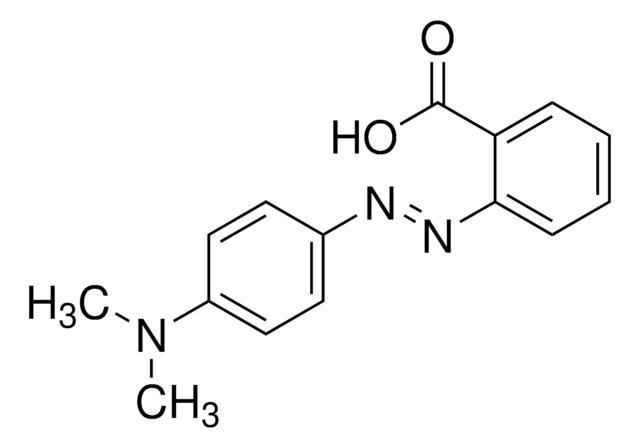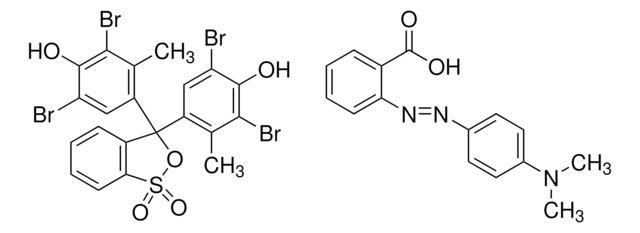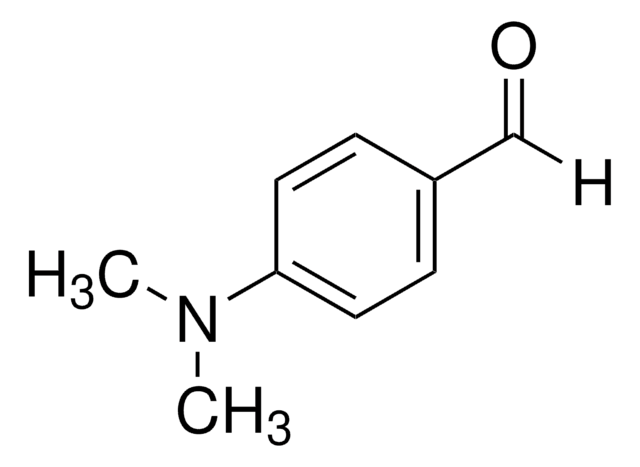08714
Methyl Red solution
suitable for microbiology
Synonyme(s) :
Methyl red indicator solution
About This Item
Produits recommandés
Agence
according to GB 4789.30-2016
according to ISO 22964:2017
Niveau de qualité
Gamme de produits
BioChemika
Durée de conservation
limited shelf life, expiry date on the label
Composition
dist. water, 200 mL
ethanol 95%, 300 mL
methyl red, 0.1 g
Technique(s)
microbe id | metabolite detection: suitable
Application(s)
clinical testing
environmental
food and beverages
microbiology
Adéquation
Enterococcus spp.
Escherichia coli
Klebsiella spp.
Proteus spp.
Pseudomonas spp.
Staphylococcus spp.
bacteria
Chaîne SMILES
CN(C)c1ccc(cc1)\N=N\c2ccccc2C(O)=O
InChI
1S/C15H15N3O2/c1-18(2)12-9-7-11(8-10-12)16-17-14-6-4-3-5-13(14)15(19)20/h3-10H,1-2H3,(H,19,20)/b17-16+
Clé InChI
CEQFOVLGLXCDCX-WUKNDPDISA-N
Vous recherchez des produits similaires ? Visite Guide de comparaison des produits
Description générale
Application
Mention d'avertissement
Danger
Mentions de danger
Conseils de prudence
Classification des risques
Eye Irrit. 2 - Flam. Liq. 2
Code de la classe de stockage
3 - Flammable liquids
Classe de danger pour l'eau (WGK)
WGK 1
Point d'éclair (°F)
69.8 °F
Point d'éclair (°C)
21 °C
Équipement de protection individuelle
Eyeshields, Faceshields, Gloves, type ABEK (EN14387) respirator filter
Faites votre choix parmi les versions les plus récentes :
Déjà en possession de ce produit ?
Retrouvez la documentation relative aux produits que vous avez récemment achetés dans la Bibliothèque de documents.
Les clients ont également consulté
Articles
For microbiologists the most fundamental stain was developed in 1884 by the Danish bacteriologist Hans Christian Gram.
Identification of Microorganisms Based on Color
Sigma-Aldrich.com presents an article concerning Differentiation of Escherichia coli from coliforms.
Sigma-Aldrich.com presents an article concerning Differentiation of Escherichia coli from coliforms.
Notre équipe de scientifiques dispose d'une expérience dans tous les secteurs de la recherche, notamment en sciences de la vie, science des matériaux, synthèse chimique, chromatographie, analyse et dans de nombreux autres domaines..
Contacter notre Service technique










